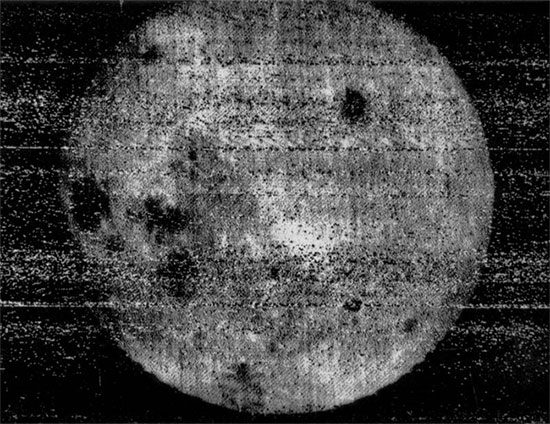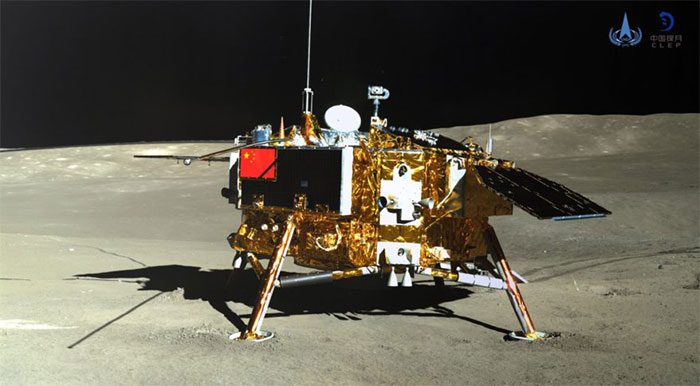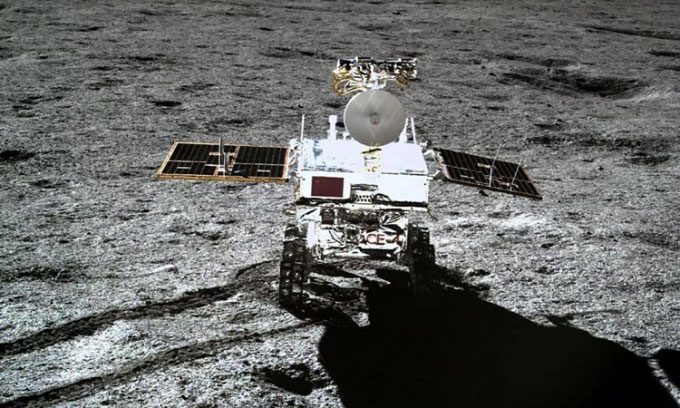The Moon is the only natural satellite of Earth. For many years, humanity has been curious about this celestial body.
In ancient times, people relied on their imagination to create beautiful and unusual legends about the Moon.
In modern times, with the aid of advanced science and technology, humans have been able to explore the beautiful yet mysterious Moon.
As early as 1959, the Soviet Union launched Luna, a program aimed at conquering the Moon. This program lasted 18 years and carried out numerous lunar exploration missions. Notably, in 1959, the Luna-3 spacecraft achieved a significant milestone by capturing images of the far side of the Moon.

Astronaut Neil Armstrong was the commander of Apollo 11 and the first person to set foot on the Moon. (Photo: Getty)
Meanwhile, starting in 1969, the United States launched Apollo 11 to land on the Moon. The Saturn V rocket propelled Apollo 11 directly from the Kennedy Space Center in Florida to the Moon. After 76 hours of flight covering a distance of 384,400 km, Apollo 11 entered lunar orbit.
On July 20, 1969, astronaut Neil Armstrong became the first person to set foot on this celestial body.
The event of Apollo 11 landing on the Moon has been recorded in history and has become a fascinating subject for both documentaries and films.
However, after landing on the Moon, humans discovered that this celestial body was not as beautiful as the stories described by ancient people. In reality, it is a rather desolate planet, devoid of magnificent architectural structures… Nevertheless, researchers stumbled upon four peculiar dark spots scattered across the lunar surface in the images captured by Luna-3 in 1959.
What are these four dark spots? Could they be alien bases?

The first image of the far side of the Moon taken by Luna-3.
Regarding these four dark spots, scientists have expressed various opinions and viewpoints.
Some believe they are shadows of buildings. Others assert that the four dark spots are merely ordinary dark patches, devoid of biological significance, and unrelated to extraterrestrial life.
Discussions about these dark spots have been ongoing for about half a century, and only now has this mystery been unraveled.
So, what exactly are these four dark spots?

The Chang’e 4 spacecraft successfully landed on the far side of the Moon in early January 2019. (Photo: CNSA)
In early January 2019, China’s Chang’e 4 probe successfully landed on the far side of the Moon. This was also the first time a spacecraft landed in this mysterious area of the Moon.
After landing successfully on the Moon, Chang’e 4 began its exploration, including investigating these four dark spots. To facilitate research, scientists named these spots A, B, C, and D. Based on images and data sent back by Chang’e 4, scientists reported not seeing any signs of buildings. This indicates that the four dark spots do not signify the existence of extraterrestrial life.
According to researchers, Spot A is actually a massive crater with an area of about 20,000 km². Due to factors such as brightness, angle, and distance, what people see is merely a gigantic dark spot.
Spot B also features a crater. Its highest point is approximately 3,200 km. Spot B appears as a dark shadow due to sunlight. Similarly, Spot C is similar to Spot B.
Lastly, Spot D is different from the first three; it is an illusory point, meaning it does not exist at all. But why do researchers observe this dark spot?
Initially, researchers speculated that this mystery might be related to the rotation of the Earth and the Moon.
However, to uncover deeper reasons behind it, further observation and exploration are needed.
The Moon still harbors many hidden mysteries. Searching for life and extracting resources from this celestial body is a goal pursued by many leading countries in space exploration.
Chang’e 4 Discovers Mysterious Phenomena on the Moon
On January 3, 2019, the Chang’e 4 spacecraft successfully landed on the far side of the Moon. This event made China the first country to have a spacecraft land in this mysterious area.
The mission of Chang’e 4 is to observe the Moon’s astronomical features, topography, mineral composition, and to measure neutron radiation and neutral atoms for environmental research of this dark side.
During its exploration and data transmission back to Earth, Chang’e 4 has frequently discovered and decoded mysterious phenomena on the Moon. The following two discoveries are examples.

The Yutu 2 rover from the Chang’e 4 mission. (Photo: CNSA)
First, in early December 2021, Our Space, a channel affiliated with the China National Space Administration (CNSA), released an image of a gray cuboid object on the lunar horizon. The image was dubbed the “mysterious hut.”

Image of the “mysterious hut” object on the Moon captured by Yutu 2. (Photo: CNSA)
This image was captured by the Yutu 2 rover (part of China’s Chang’e 4 mission) as it traversed the Von Karman crater. At the time the image was released, researchers estimated that it would take Yutu 2 about 2-3 months to reach this object.
However, as the Yutu 2 rover was on its journey, many netizens speculated that the object resembling a “mysterious hut” could be a “Moon palace” or even an alien base.
By January 7, 2022, the truth about the “mysterious hut” on the Moon was unveiled when Our Space released a close-up image of this peculiar object. It turned out to be a rock located on the rim of the crater. This rock had a very unusual shape and was named “Yutu” by the rover control team back on Earth.

The truth about the “mysterious hut” on the Moon is just a rock. (Photo: CNSA)
Second, in early February 2022, Yutu 2 again surprised scientists by discovering a strange object on the Moon. These were bizarre-shaped glass beads found in the far side of the Moon.
Specifically, according to research published in the journal Science Bulletin, the Yutu 2 rover captured dim images of two spherical glass beads on the lunar surface using its panoramic camera.
Researchers indicated that no compositional data had been collected for these peculiar spherical glass objects. However, their unique morphology and surrounding context suggest that the two spheres originated from a meteorite impact, not from volcanic activity on the Moon.

The glass beads discovered by Yutu 2 (c,d) differ in size and color from samples (a, b) collected by Apollo missions. (Photo: Xinhua)
Researchers also compared these images with glass beads collected by Apollo missions on the Moon in the past. The results showed that the glass objects captured by Yutu 2 were smaller and had different colors.
Researchers predict that there will be many similar spherical glass beads on the lunar highlands. This also provides promising sample collection targets to explore the history of impacts during the early periods of the Moon.


















































